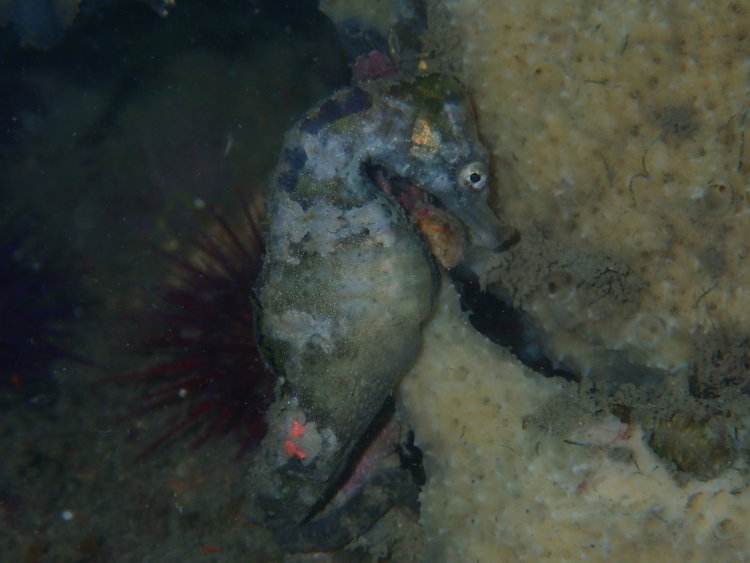The Near-threatened longsnout seahorse

Hippocampus reidi, longsnout seahorse. Photo by Jemma/Utila Dive Center.
Our latest featured iSeahorse observation is courtesy of Jemma, aka jemmaudc, who works at Utila Dive Center, our iSeahorse Ambassador for Honduras. This ethereal beauty was spotted off the Caribbean coast, and has been identified as a longsnout seahorse (Hippocampus reidi), which has a range spanning from North Carolina to southern Brazil.
Unfortunately, the population of longsnouts is in decline, likely due to a variety of factors including coastal development, which threatens the mangrove forests they call home, and fishing, whether they’re caught accidentally during trawling or intentionally for aquarium use. H. reidi is currently classified by the IUCN Red List as a Near Threatened species.
Fortunately, Utila Dive Center is doing some wonderful seahorse conservation work! Their GoEco program, run by Jemma, is committed to educating divers about local saltwater fauna and how they can contribute to protecting them. By conducting seahorse surveys and teaching students about seahorse conservation, this program has immensely contributed to iSeahorse’s mission. GoEco is also involved in the conservation of dolphins and coral, as well as population monitoring of invasive lionfish.
Thanks, Jemma and Utila Dive Center, for helping out Hippocampus!
View the original observation here
Learn more about Utila Dive Center








